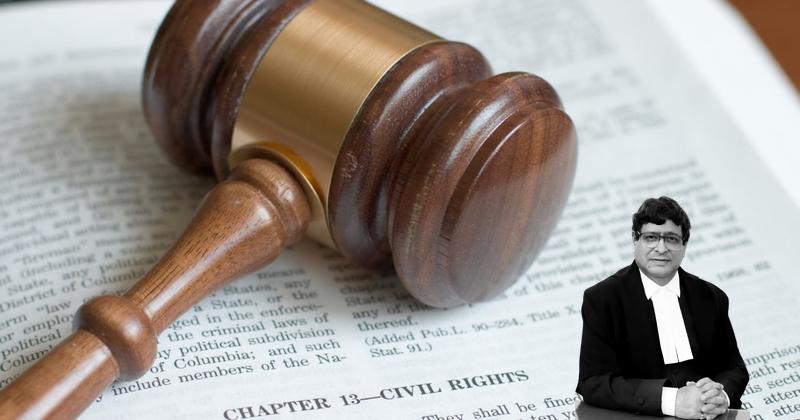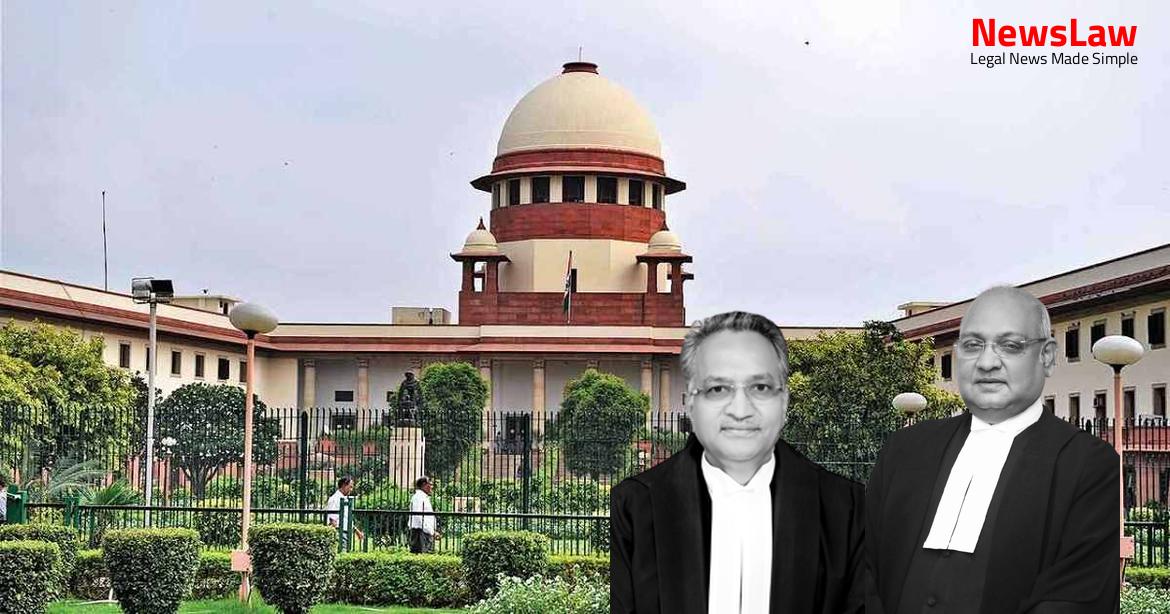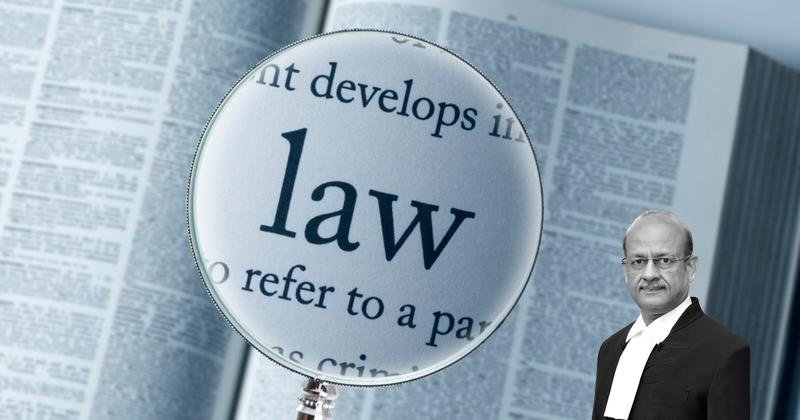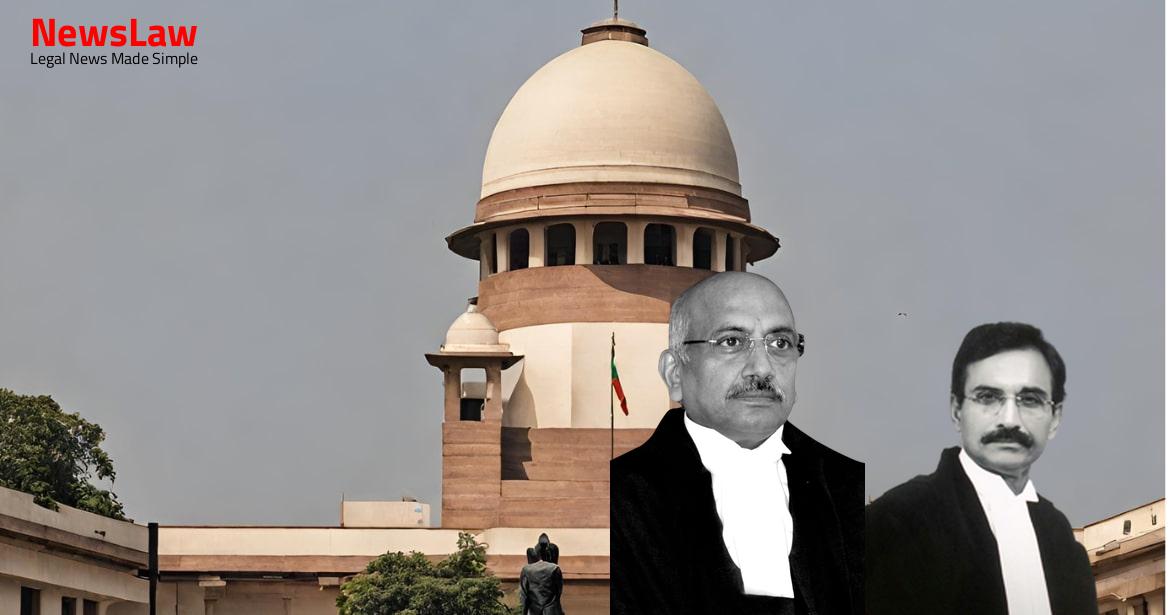The appeal of the present appellant was dismissed and the conviction and sentence of the trial court was upheld by the High Court, vide its order dated 31.05.2017. to 5.30 P.M on 08.05.2000 and according to his brother-in-law (PW-1) he left their house at about 5.30 P.M on 08.05.2000. He states that while he was searching for his brother, he met his neighbour Karanjit Singh, at the petrol pump of village Dadupur, who informed him that he had seen Gurmail Singh on his tractor on 08.05.2000 at around 7.00 pm with Mange Ram and Dinesh (the two accused), who were residents of nearby villages. on 12.05.2000, at 1.30 P.M.
The post- mortem was conducted at about 4:15 P.M.
The post mortem examination of the body shows that rigor mortis was present in all the four limbs of the body, but was not there in the neck. In the case at hand, the body of the deceased was recovered from a canal, and therefore the possibility that rigor mortis would still remain in the body cannot be entirely ruled out, but this has nowhere been explained. On 14.05.2000 (i.e., the next day)
Mange Ram led the police party to the place where the tractor of the deceased was abandoned by him and Dinesh Kumar. PW-10 had seen the deceased along with the two accused i.e., Dinesh Kumar and Mange Ram at about 7:00 P.M. According to the witness the deceased was driving the tractor and the two i.e., the appellant and Mange Ram were sitting on the mudguard of the tractor. As far as motive is concerned, the prosecution case is that the two accused killed the deceased only to steal his tractor. The co-accused Mange Ram was arrested on 12.05.2000 and had led to these discoveries on 12, 13 & 14 May.
If the disclosure has been made by the accused to the police while he was in their custody and such a disclosure leads to discovery of a fact then that discovery is liable to be read as evidence against the accused in terms of Section 27 of the Act. on 12.05.2000 in the afternoon and the post-mortem was conducted at about 4.15 PM on the same day i.e.12.05.2000.
Sumesh Garg who had conducted the post-mortem, who gave his opinion that the death occurred more than 48 hours before the time of the post-mortem and therefore the deceased was killed by Mange Ram and present appellant on 08.05.2000 this is what has been said by the High Court: – “According to PW-4 Dr. It was the duty of the defence to ask the doctor who had conducted post mortem on the dead body, whether the presence of rigor mortis was suggestive of the fact that the deceased was killed within thirty-six hours of his post mortem examination.
–– The Judge may, in order to discover or to obtain proper proof of relevant facts, ask any question he pleases, in any form, at any time, of any witness, or of the parties about any fact relevant or irrelevant; and may order the production of any document or thing; and neither the parties nor their agents shall be entitled to make any objection to any such question or order, nor, without the leave of the Court, to cross-examine any witness upon any answer given in reply to any such question: Provided that the judgment must be based upon facts declared by this Act to be relevant, and duly proved: Provided also that this section shall not authorize any Judge to compel any witness to answer any question, or to produce any document which such witness would be entitled to refuse to answer or produce under sections 121 to 131, both inclusive, if the question were asked or the document were called for by the adverse party; nor shall the Judge ask any question which it would be improper for any other person to ask under section 148 or 149; nor shall he dispense with primary evidence of any document, except in the cases hereinbefore excepted.” Chinnappa Reddy in the said judgment refers to his earlier Judgment given by him as a Judge of the Andhra Pradesh High Court, where it was said : “Every criminal trial is a voyage of discovery in which truth is the quest. The record of the proceedings of the Committing Magistrate may also be perused by the Sessions Judge to further aid him in the trial.” The duty of the presiding judge of a criminal trial is not to watch the proceedings as a spectator or a recording machine but he has to participate in the trial “by evincing intelligent active interest by putting questions to witnesses in order to ascertain the truth.” While referring to a decision of Lord Denning in Jones v. The Court, the prosecution and the defence must work as a team whose goal is justice, a team whose captain is the judge. It would not, but then a very heavy burden is placed upon the prosecution to prove that during this period of last seen and discovery of the body of the deceased or the time of the death of the deceased, no other person but the accused could have had an access to the deceased.
Where time gap between the last seen and time of death is long enough, as in the present case, then it would be dangerous to come to the conclusion that the accused is responsible for the murder. Sanjay Thakran, where in the evidence of last seen, the recovery of dead body was only a few hours before “last seen”, it was not considered reliable. In present case in the findings of the trial court and High Court this appears to be the most important aspect which weighed with the trial court as well as the High Court in establishing the guilt of the accused. Burden of proving fact especially within knowledge –– When any fact is especially within the knowledge of any person, the burden of proving that fact is upon him. Section 106 of the Act is an exception to the rule which is Section 101 of the Act, and it comes into play only in a limited sense where the evidence is of a nature which is especially within the knowledge of that person and then the burden of proving that fact shifts upon him that person. It is for this reason that it has been held that the accused has not been able to discharge his burden under Section 106 of the Act and therefore this has to be read as an additional link in the chain of evidence against the appellant.
The so-called alleged place of crime and the recovery of tractor or the place where the tractor was abandoned had already been disclosed by the co-accused by the time the present appellant was arrested.
The factors which have to be taken into consideration by the Court in a case of circumstantial evidence, are too well settled to be stated but nevertheless these factors which are being reproduced from Anjan Kumar Sarma (supra) are as under :- (1) the circumstances from which the conclusion of guilt is to be drawn should be fully established. The circumstances concerned “must” or “should” and not “may be” established; (2) the facts so established should be consistent only with the hypothesis of the guilt of the accused, that is to say, they should not be explainable on any other hypothesis except that the accused is guilty; (3) the circumstances should be of a conclusive nature and tendency; (4) they should exclude every possible hypothesis except the one to be proved; and (5) there must be a chain of evidence so complete as not to leave any reasonable ground for the conclusion consistent with the innocence of the accused and must show that in all human probability the act must have been done by the accused.”
Case Title: DINESH KUMAR Vs. THE STATE OF HARYANA (2023 INSC 493)
Case Number: Crl.A. No.-000530-000530 / 2022



